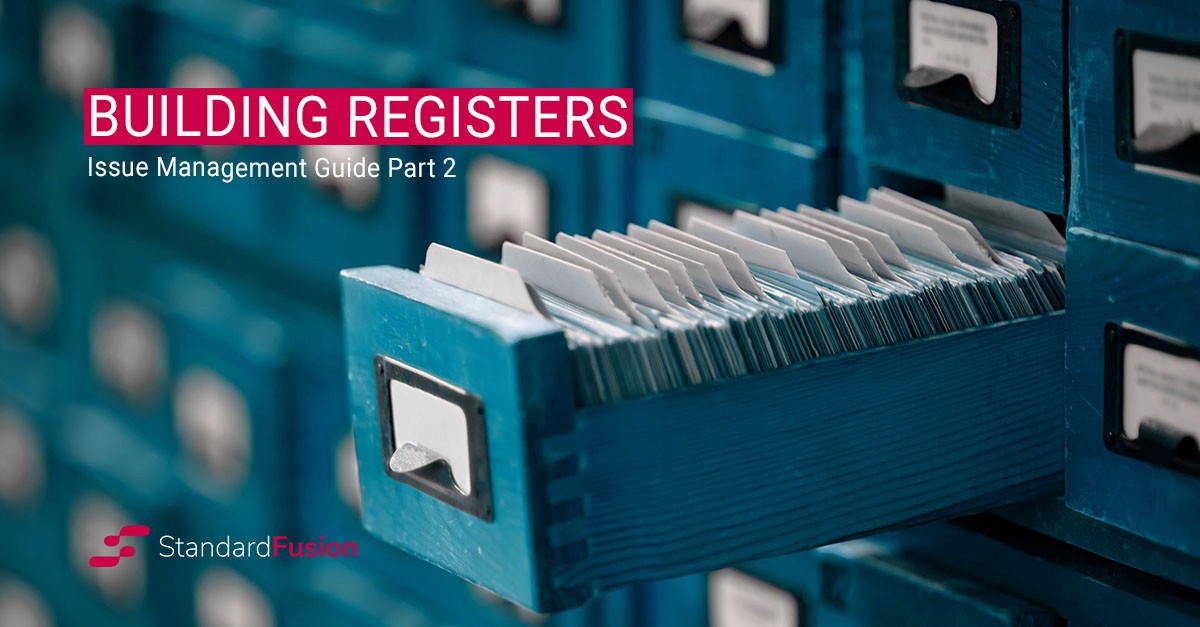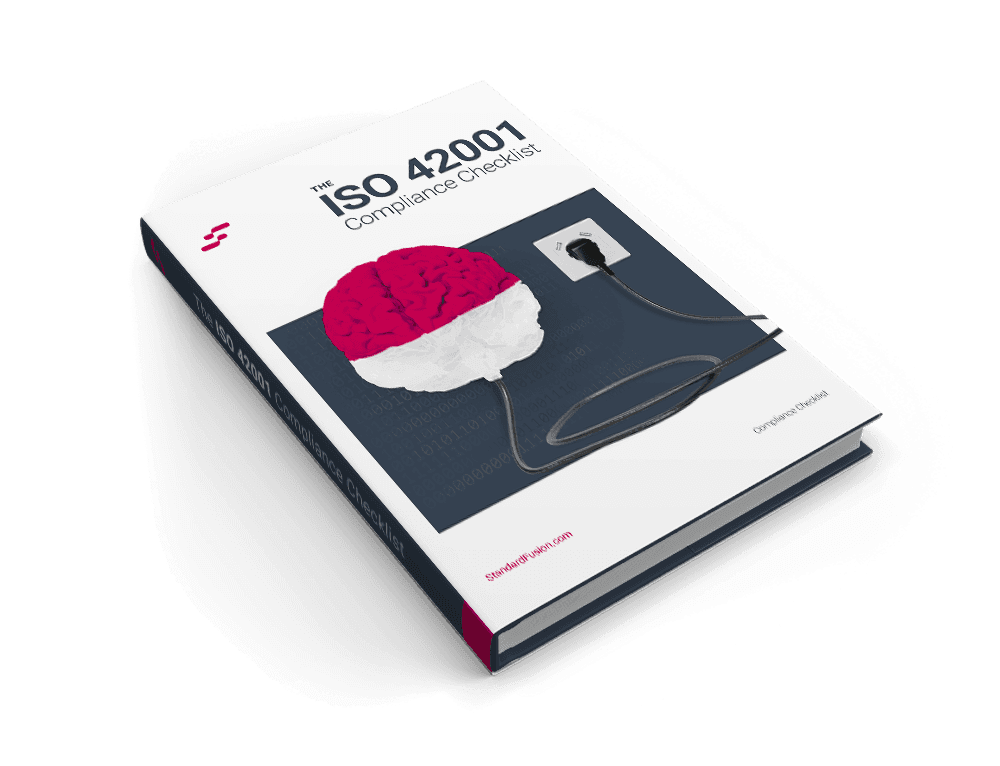Published on: May 4, 2022
| Updated: Apr 7, 2025
Issue Management - Corrective Actions & Monitoring
The processes described in the previous articles aim to provide a structured and systematic approach to managing organizational risks. Once the baseline of these procedures is implemented, your organization will gain clarity and have an accurate understanding of issues. This will provide the necessary information to make informed decisions on how to mitigate, or even eliminate risks. In this last article, we will focus on corrective actions and how to monitor the efficacy of your Issue Management Program, highlighting the best approaches to help you remediate any issues.
So far in our series, we've covered:
Creating an issue management program
Issue identification and categorization
Building a risk registry
Issue ownership and management methodologies
Corrective Action
Once an issue is identified, ownership assigned, and root-cause analysis completed, it is time to fix the problem!
One of the most well-known approaches is CAPA (Corrective and Preventive Actions). CAPA refers to an approach to improving processes by reducing the risks of undesirable events and non-conformities. As a vehicle of risk-based thinking, it is a vital part of any Management System, and it should be adopted as a unified approach to issue resolution as part of your Governance Program.
Corrective actions must be defined by the issue owner, and they are set to correct any ad-hoc or systemic nonconformity and risk. Most importantly, Corrective Action Plans must include:
A description of what will be done to correct the issue;
Who will be involved in the project;
Milestones; and
Acceptance Criteria.
Documentation plays a critical role in ensuring these elements are effectively implemented. By identifying the root cause of problems, documentation helps prevent recurrence and strengthens business processes. This is essential not only for addressing immediate issues but also for ensuring long-term improvements.
For instance, rigorous documentation can help resolve customer complaints, address equipment failures, and clarify work instructions. It serves as a foundation for transparency, enabling team members to understand and engage with the corrective actions required.
Moreover, introducing templates in your corrective action plans adds structure and clarity. These templates act as a blueprint, guiding teams through the process with clear steps and responsibilities. In doing so, they empower team members to take proactive measures and ensure consistent application of corrective actions across the organization.
In essence, documentation isn't just about recording information, it's a strategic tool that transforms how businesses manage and rectify issues, paving the way for continuous improvement.
Here are some proven methods to dig deeper:
1. 5 Whys Technique
Objective: Simplify the process of identifying the root cause by constantly questioning the problem.
Process: Ask "why" repeatedly—typically five times—to peel away the layers of symptoms and reveal the underlying cause.
2. Fishbone Diagram (Ishikawa)
Objective: Visualize potential causes of a problem in categories to systematically investigate each.
Process: Draw a diagram that resembles a fishbone to organize factors that contribute to the issue, grouping them by categories like "People," "Methods," and "Machines."
3. Failure Mode and Effects Analysis (FMEA)
Objective: Anticipate potential points of failure and evaluate their impact.
Process: Analyze processes to identify where and how they might fail, aiding in preemptive correction and mitigation.
4. Pareto Analysis
Objective: Prioritize problem areas to focus on those leading to major effects.
Process: Utilize the 80/20 rule to target vital few contributors causing the majority of the issues.
Employing these techniques will not only aid in uncovering the root cause but also empower you to implement effective long-term solutions. Balancing structured approaches with creative problem-solving ensures comprehensive analysis and resolution.
How Automation Enhances the Corrective Action Plan Process
Simplifies Complex Tasks
Managing corrective action plans manually can be a daunting task, riddled with inefficiency and potential for error. Automation changes the game by simplifying these complex tasks. Software solutions that require little to no coding expertise streamline the process, eliminating redundant manual input and allowing teams to focus on more strategic activities.
Boosts Accuracy and Reliability
By automating data entry and analysis, organizations reduce human error, enhancing the accuracy and reliability of their plans. Automation tools seamlessly gather and store data, enabling comprehensive root cause analysis. This results in well-informed decision-making and more effective resolutions.
Enhances Data Visibility
Automation platforms often provide user-friendly dashboards that deliver real-time insights. Key stakeholders gain immediate access to critical information, enabling quicker, more informed decisions. This enhanced visibility supports transparency and boosts team collaboration.
Speeds Up the Process
Since automation handles a multitude of repetitive tasks swiftly, it accelerates the planning and corrective action process. This efficiency cuts down on the time it takes to implement solutions, allowing teams to address issues promptly and reduce downtime.
Increases Cost-Effectiveness
Automated solutions minimize the need for extensive manpower and resources, leading to significant cost savings. By streamlining operations, businesses can allocate resources more effectively, improving overall productivity.
By embracing automation, organizations can transform their corrective action plans into a more streamlined, reliable, and efficient process.
Why Establishing the Scope of a Problem Matters in a Corrective Action Plan
When developing a corrective action plan, comprehending the breadth and depth of a problem is absolutely vital. Determining the scope provides a clear picture of the problem's impact on essential operations and helps in prioritizing remedial efforts.
Understanding whether the issue is pervasive or isolated can significantly influence the urgency and approach of your response.
For instance, if a problem disrupts a crucial part of the supply chain or poses a recurring hazard, like a daily leak in a critical pipeline, it demands swift intervention. In contrast, an issue that occurs sporadically or affects a limited operational area may need a different approach.
By evaluating the scope, businesses can effectively prioritize issues based on their severity and reach, ensuring that resources are allocated efficiently and problems are addressed in order of urgency. This structured prioritization helps prevent minor issues from escalating into significant disruptions, safeguarding operational continuity.
Understanding Containment Actions and Their Importance
Containment actions are immediate measures taken to address and manage the symptoms of a problem temporarily. They act as a first line of defense, ensuring that issues do not escalate while a permanent solution is being developed.
Why Are Containment Actions Necessary?
Tackle Urgent Symptoms: Not all problems can wait for a comprehensive solution. Containment actions manage the most pressing symptoms, ensuring continuity of operations and preventing further damage.
Provide Breathing Room: These actions allow your team the necessary time to conduct a thorough investigation into the root cause, without the pressure of unmanaged chaos.
Mitigate Risk: By implementing these measures early, the risks of prolonged issues are minimized, protecting resources, time, and reputation.
How to Effectively Implement Containment Actions
Perform Regular Inspections: Conduct checks to identify any signs of trouble that can turn critical if left unchecked.
Deploy Quick Fixes: Utilize temporary solutions that don't require much time or resources until a more permanent fix is determined.
In summary, containment actions play a crucial role in immediate problem management, bridging the gap between identifying an issue and solving it thoroughly. They keep operations on track while your team works on preventing a recurrence.
Understanding SMART Goals in Corrective Action Planning
In corrective action planning, SMART goals are your blueprint for effective problem-solving. These goals should be:
Specific: Clearly define what you aim to achieve. Vagueness is the enemy. Instead of saying "improve product quality," specify which quality aspects you want to enhance and how.
Measurable: Attach metrics to your objectives. This helps track progress and determine success. For instance, a goal to "reduce errors by 20% in six months" provides a concrete benchmark.
Achievable: Set realistic targets that are within your resources and capabilities. Pushing for an impossible outcome can demotivate your team.
Relevant: Align your goals with the core issue. Ensure that every step you plan addresses the root cause, not just the symptoms.
Time-bound: Establish deadlines to create a sense of urgency and keep your team focused. Deciding on a timeline like "within the next quarter" adds structure and accountability.
By incorporating these elements, you ensure that each goal in your corrective action plan is well-defined, actionable, and targeted towards eradicating the root cause of the problem. This methodical approach not only resolves issues effectively but also prevents them from reoccurring.
How to Define a Problem in a Corrective Action Plan
Defining a problem within a corrective action plan is crucial for addressing any form of noncompliance or operational hiccup. Start by identifying and describing the problem. This can be achieved using multiple methods based on the scenario at hand.
Methods for Problem Identification
Internal Audits: Conduct thorough internal audits to pinpoint issues related to regulatory compliance or risk controls.
Incident Investigations: Investigate incidents to determine the root cause of any accidents or errors.
Once the problem is recognized, the next step is to research its business impact. Delve into the specifics—who is affected, what occurred, when it happened, where it's impacting, and why it matters. This detailed exploration is essential to fully capture the context and magnitude of the issue.
Crafting a 'Should Be' Statement
A critical component of problem definition is clarifying what the outcome should ideally be—often referred to as crafting a 'should be' statement. For instance, if a supplier delivers the wrong materials, detail the discrepancy like this:
Observed Statement: "Received steel parts."
'Should Be' Statement: "The parts should be made of copper."
This comparison can reveal gaps between actual and expected results, guiding corrective measures. If you're struggling to articulate what the intended outcome should be, reconsider whether the issue merits a corrective action plan. The clarity of this statement can determine the plan's necessity and effectiveness.
Understanding the Seven Steps of the Corrective Action Process According to ISO 9001
A corrective action plan template serves as a strategic tool used to address and prevent recurring issues within an organization. Its primary purpose is to streamline the process for identifying and solving problems, ensuring consistency and accountability across teams.
By providing a structured approach, this enable team members to document problems precisely, propose actionable solutions, and monitor the effectiveness of those solutions over time. This added layer of organization fosters transparency in operations and helps ensure that everyone involved is informed and aligned with the corrective measures being implemented.
Moreover, a well-designed corrective action plan template enhances operational efficiency by clearly outlining steps and responsibilities. It empowers team members to take initiative in implementing fixes, ultimately contributing to a more proactive and problem-solving work environment. Here’s how ISO 9001 outlines this process across seven steps:
1. Define the Problem
Start by clearly identifying the problem at hand. This involves pinpointing noncompliance or nonconformity issues through methods like internal audits or incident investigations. An important part of this step is detailing the problem’s specifics: who is involved, what exactly is wrong, when and where it occurs, and why it matters. Establishing this "should be" scenario is crucial to understanding the true scope of the problem.
2. Establish the Problem’s Scope
Once the problem is defined, assess its impact. Determine how the issue affects business operations by examining its frequency and scale. For example, a glitch affecting a full production line is more urgent than one affecting a single component. This evaluation helps prioritize actions based on the urgency and breadth of the problem.
3. Implement Containment Actions
Immediate issues can't wait while a long-term strategy is developed. Quick, temporary measures should be employed to contain the problem and mitigate its immediate impact. These actions might not fix the underlying cause but are essential to manage surface-level symptoms while a comprehensive solution is devised.
4. Identify the Root Cause
Uncovering the root cause is often challenging but necessary for effective resolution. Techniques like the “5 Whys” and fishbone diagrams are useful here. These methods help narrow down to the underlying issue rather than just addressing symptoms, ensuring that corrective efforts are properly targeted.
5. Develop a Corrective Action Plan
With the root cause identified, devise a specific plan to resolve it. Set SMART (Specific, Measurable, Achievable, Realistic, Time-bound) goals to guide the corrective actions. This involves detailing steps, assigning responsibilities, and establishing clear reporting guidelines and timeframes. In some cases, securing management approval and budget considerations might also be necessary.
6. Execute the Corrective Action Plan
Begin implementing the solutions outlined in your plan. Whether it involves updating equipment, revising processes, or bringing in external expertise, thorough execution is key. Keep all relevant parties informed of progress to ensure alignment and transparency throughout the process.
7. Evaluate and Follow-Up
After implementing the corrective actions, it’s crucial to evaluate their effectiveness. This involves reviewing outcomes and documenting any changes in operation or processes. Scheduling a follow-up ensures the issue is truly resolved. If problems persist, the process should be revisited to continue addressing underlying issues while capturing lessons learned for future reference.
These seven steps create a systematic and effective framework for problem-solving, reflecting the best practices established by ISO 9001 to maintain quality and compliance in business operations.
Preventive Action
The essential difference between corrective action and preventive action is that preventive actions are, by definition, proactive changes necessary to avoid undesirable situations. Preventative action focuses on the root causes of identified problems to prevent their occurrence, while corrective action prevents an issue from recurring. Preventative action seeks to determine potential issues and prevent them before they occur.
A common misconception is that preventative action seeks to prevent issues from recurring. This is all part of corrective action because an issue has taken place and steps must be taken to prevent similar problems from recurring.
Preventative action is aimed at predicting problems that have not yet taken place. Preventative action acts on the root cause of the problem from a hierarchical perspective. It is important to predict and understand what events could take place in an organization, where, and why. When issue owners define the preventive strategy, they can prioritize adding steps aimed in anticipation of these kinds of issues.
Monitoring
After having created a centralized Issue Management Program, and communicated with and trained all stakeholders, it is equally important to monitor the work being done.
Issue Monitoring Process (or Issue Control Process) is a description of how you keep track of open response plans. It describes how these plans (corrective actions and preventive actions) are performing against the expected results, including:
Task execution (progress)
Budget
Schedule
Acceptance Criteria
It is also important that the Compliance Program Manager defines the following items as part of the Issue Monitoring Process:
Frequency of revisions
Metrics used to evaluate progress
Structure of revision committee
Authorized approvers for any deviations
Standardized monitoring techniques are critical to ensure the success of the Issue Management Program.
Equally crucial is the follow-up after implementing a corrective action plan. This step ensures the plan effectively resolves the problem and prevents recurrence. Schedule a final debrief to inform your team about any changes to operations or workflows. This transparency helps maintain alignment and prepares the team for any adjustments needed.
After an appropriate period, reassess the situation to confirm the corrective action plan's success. If the issue persists, it's essential to dig deeper and repeat the process to address underlying causes. Continuously document any lessons learned to enhance future responses and improve the organization's resilience against similar challenges.
Integrating these practices into the monitoring phase not only solidifies the corrective action plan's effectiveness but also fosters a culture of continuous improvement and accountability.
Reporting Results
Now that all the hard work has been done, it is time to report the results to leadership. Reporting can be tricky if you don't set specific objectives as part of the reporting structure. Reporting results with leadership is an important step in the process as it keeps senior management informed and engaged. When executives and employees are sharing information, there is improved communication between them to identify problem areas, find solutions, and ensure support and sponsorship for new implementations.
Another benefit of a good management reporting system can be seen at a more functional level. Effective reports promote cross-functional cooperation and decrease any duplicate efforts. This will limit resolution time and costs, thereby increasing productivity.
When reporting the results of actions taken in issue resolution, it is also important to make sure that all the information is logged into the issue registry and the appropriate status is assigned to individual risks and nonconformities. Workflow status can vary between:
Open
In progress
Ready for approval
Closed
Delayed
Summary
An Issue Management Program can be a powerful yet complicated system. It is a structured and documented Program that must be communicated and followed across the organization.
Being able to identify and properly categorize the various issues that might arise in a register are critical steps in managing them. Assigning ownership to risks and nonconformities will ensure the appropriate actions are being taken and escalated to mitigate, or even eliminate internal and external threats. A huge advantage to having a centralized registry is being able to manage the resolution progress based on a prioritization system.
As your Issue Registry scales with your growing organization, leadership would expect a periodic revision of risks, portraying how your Governance Program identifies improvement opportunities and proactively prevents the recurrence of critical issues.
How Can StandardFusion Help?
StandardFusion streamlines the management of your Issue Management Program. You can create a centralized database of your nonconformities and risks, assign ownership, and perform root-cause analysis. Once an issue is identified, you can create tasks with the corresponding corrective/preventive work, assign them accordingly, track progress, and upload any necessary documents. StandardFusion can give you an overview of all completed and pending actions and it allows you centralized visibility of your program with customizable reports in different formats.







